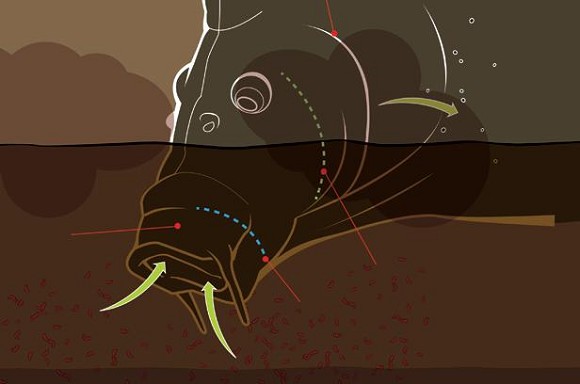
How carp feed in silt
This time around, fish expert, James Anderson reveals how carp actually feed in silt
What is silt?
"As we move on from last month's subject of how carp feed on particles, this month we're going to look at how carp feed in silt. Silt is a product of broken down organic material in a fishery such as dead weed or leaves falling from terrestrial plants and trees. As this matter is broken down by organisms such as fungi and bacteria, it forms small particles. With the movement of water currents these particles end up settling in depressions and gullies on the lakebed."
A silt bed
"Over time, this action creates what we would term as a silt bed. Silt beds provide good habitat for invertebrate such as bloodworm and a range of other midge larvae. These invertebrates form an important part of the carp's diet and they have become very good at extracting them from the silt in which they live."
Burying its body
"Silt beds can be up to several feet deep and should be thought of as a three-dimensional environment. Inverts such as bloodworm can live deep down in the silt which then means the carp have to dig deep in order to access them. In fact, a carp will burrow into the silt as far as halfway up its body in search of these tasty morsels."
Zero visibility
"These fish will sift through the silt using its highly developed sense of taste to locate edible items, which causes big plumes of silt to the ejected into the water column. Visibility is zero so the carp relies heavily on touch and taste when feeding in this type of environment."
Visual signs
"When carp are feed in silt, they will often disturb built up gases that then rise to the surface and are visible to anglers. These sheets of bubbles are a good sign of feeding fish, however, it may mean that the carp are feeding deep in the silt and a hookbait presented on the surface of the substrate may be ignored."
Missing your hookbait
"I have experience this when fish were obviously feeding hard in a silty area for a long period of time and I was getting very frustrated having not had a bite. Big sheets of bubbles were hitting the surface yet nothing would pick my hookbait up. After what seemed like hours I finally had a run, however, on landing the fish I could see it was actually hooked in the side of the face. A clear sign that the fish had been feeding right around my rig yet deeper in the silt on natural food items. Only by chance had it become hooked and it had no intention of eating my hookbait."
Don't ignore...
"Don't ignore silt pockets in your lake, as they are natural feeding areas for the fish that hold large amount of natural feed. But just be aware that they may be feeding on them in a completely different manner to when feeding on harder areas."
This article was taken from Issue 108 (March 2013) of CARPology magazine. Be the first to read CARPology's articles in print before they're posted on-line, and get your hands on loads of additional content by subscribing on-line.


